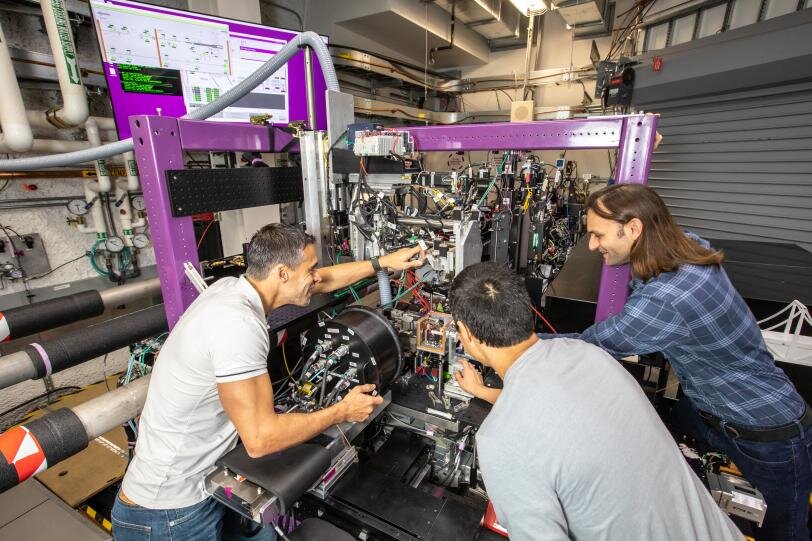Scientists from SLAC National Accelerator Laboratory have used two ultrafast X-ray spectroscopy techniques to capture the movement of a molecule called ferricyanide. This is the first time that the movement has been recorded in this way, and the team thinks that their approach could help map more complex chemical reactions, such as oxygen transportation in blood cells or hydrogen production using artificial photosynthesis.
Research and Findings
To capture the movement, the researchers used an ultraviolet laser to hit a mixture of ferricyanide and water, and bright X-rays generated by the Linac Coherent Light Source (LCLS) X-ray free-electron laser to probe the sample’s atoms. The team then extracted information from the X-ray data by capturing and analyzing a second emission region, called valence-to-core, which has been significantly more challenging to measure on ultrafast timescales. Combining information from both regions enabled the team to obtain a detailed picture of the ferricyanide molecule as it evolved into a key transitional state.
The team showed that ferricyanide enters an intermediate, excited state for about 0.3 picoseconds after being hit with a UV laser. The valence-to-core readings then revealed that following this short-lived, excited period, ferricyanide loses one of its molecular cyanide “arms,” called a ligand. Ferricyanide then either fills this missing joint with the same carbon-based ligand or, less likely, a water molecule.
Implications
The research team believes that their technique could be used to study more complex molecules, such as hemeproteins, which transport and store oxygen in red blood cells. These molecules can be tricky to study because scientists do not understand all the intermediate steps of their reactions.
“You want to be able to replicate what nature does to improve technology and increase our foundational scientific knowledge,” said SLAC senior scientist Dimosthenis Sokaras. “And in order to better replicate natural processes, you have to know all of the steps, from the most obvious to those that happen in the dark, so to speak.”
The research team refined their X-ray spectroscopy technique at SLAC’s Stanford Synchrotron Radiation Lightsource (SSRL) and LCLS over many years, and then combined all this expertise at LCLS’s X-ray Correlation Spectroscopy (XCS) instrument to capture the molecular structural changes of ferricyanide. The team published their results in Nature Communications and plan to use their methods to uncover previously inaccessible secrets of chemical reactions.



Leave a Reply